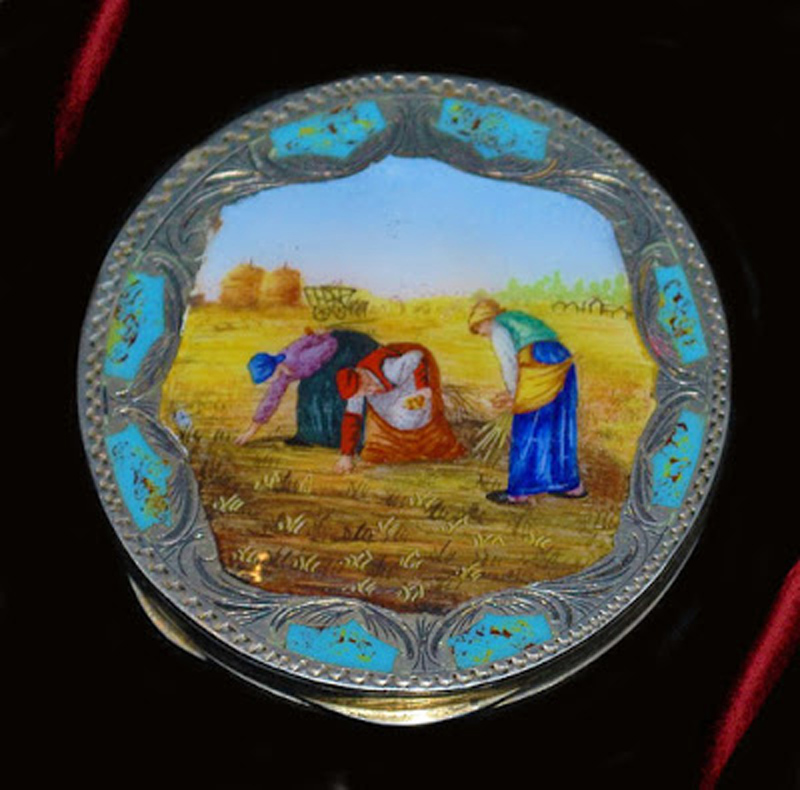
The pastime of collecting powder compacts is one that can amuse, delight and engross people from all walks of life. Compacts can still be purchased for a few dollars while others command a much higher price.
One class of collectible compacts that belong to this upper echelon, are those made in Italy. Decorated with hand painting and enamel on cases of sterling silver, gilded brass or gilded silver, you will find examples selling for several hundred dollars and higher.
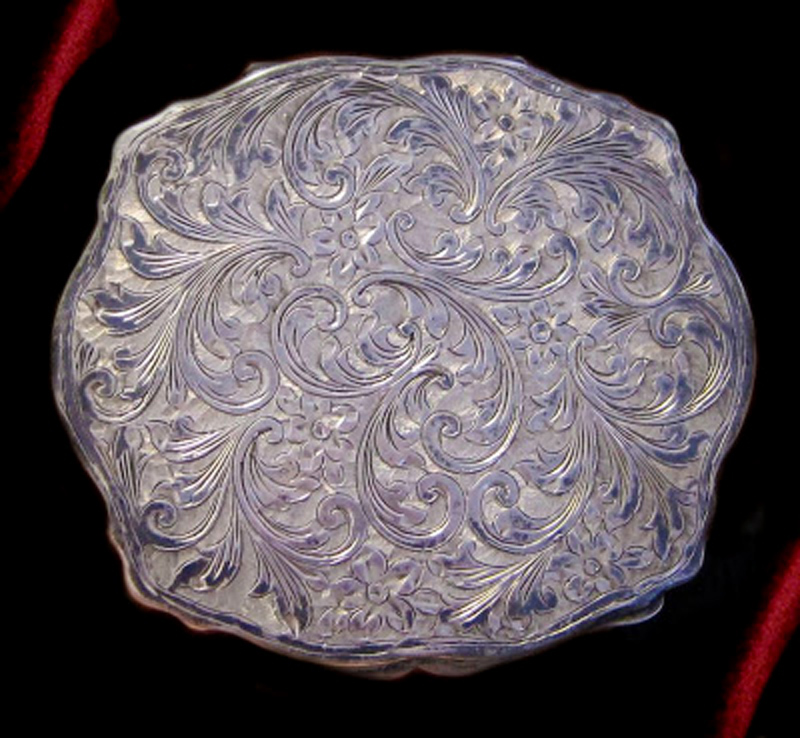
Italian compacts were produced in a variety of shapes and elaborately decorated with hand-painted scenes.
The backs of most of Italian compacts are very ornate with a detailed etched design.
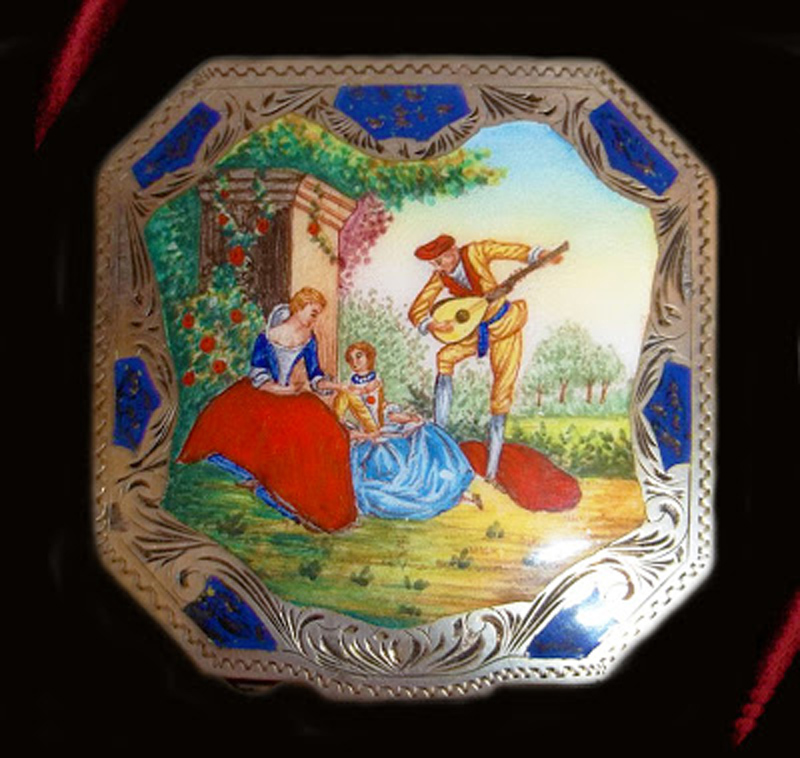
Made by a handful of small, family-run, jewelry businesses in Florence, Italy, the cases were made as souvenirs. Dozens of silversmiths and jewelers made these compacts and each used techniques that distinguished their cases from ones made by their competitors. Most were exported to the US to be sold in department stores such as Sax Fifth Avenue and Neiman Marcus.

Italian compacts were produced in a variety of shapes and elaborately decorated with hand-painted scenes. Italian compacts are usually not as old as we might think. Many were made after World War II. One feature to watch for, which is a good date marker, is the symbol called a Fasces, which was a bundle of sticks, bound with an axe. It was used by law on silver jewelry in Italy, between 1934 and 1944.
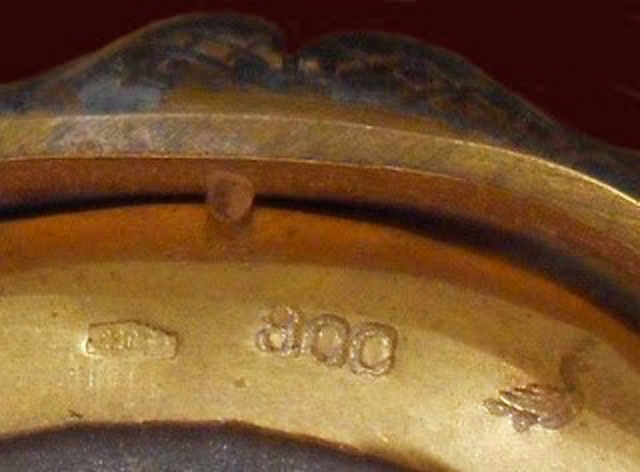
Before the Fasces symbol was introduced silversmiths chose pretty much anything (or nothing) to identify cases they manufactured. Typically, though, cases made before 1934 did show the silver grade, most often with the figure 800 but some cases used higher grade silver – up to 925, which is the sterling equivalent. In addition, some silversmiths used their initials or a stamped symbol such as a fleur-de-lis or a lion.
A clear set of marks identify Ottavio Spinelli’s work. The manufacturer’s number is 220 FI and the bird. The FI stands for Florence and the 800 represents the silver content.
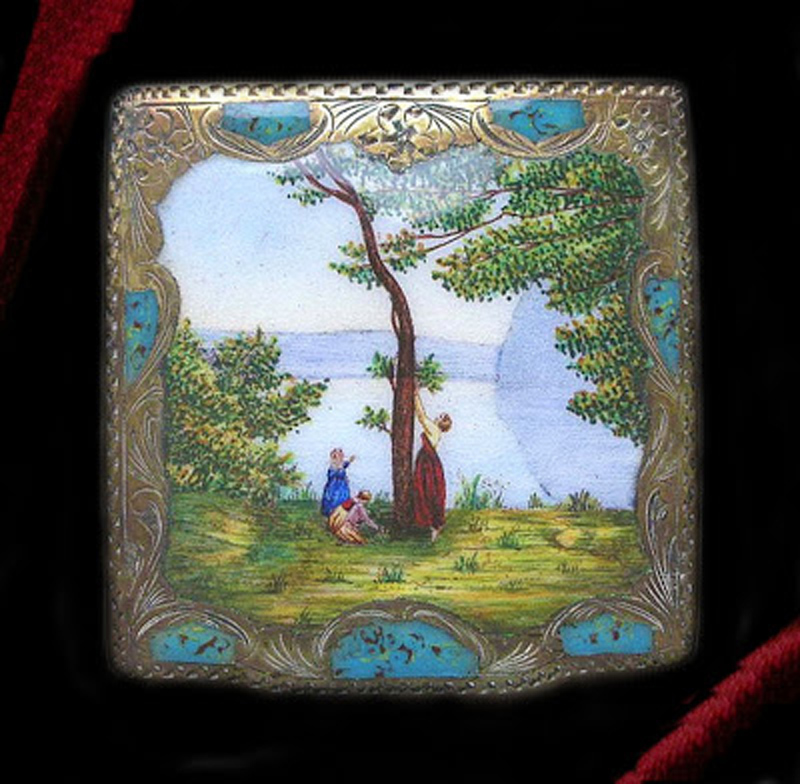
Today, these Italian enameled compacts generate a lot of interest for collectors, and it is not hard to understand why. Each was hand crafted and most included a rendition of a classical piece of artwork. While not perfect copies of the original painting, some of these miniatures are very close. Often the artwork had to be adjusted to fit the shape of the case, or only a part of the original work was used or elements were omitted. At other times the whole composition was reversed and often colors were changed to suit the whim of the copyist. But, despite these variations, the finished product stands on its own and makes a wonderful addition to compact collections. Such cases are in fact, miniature pieces of art in their own right, allowing collectors to establish their own private art gallery.
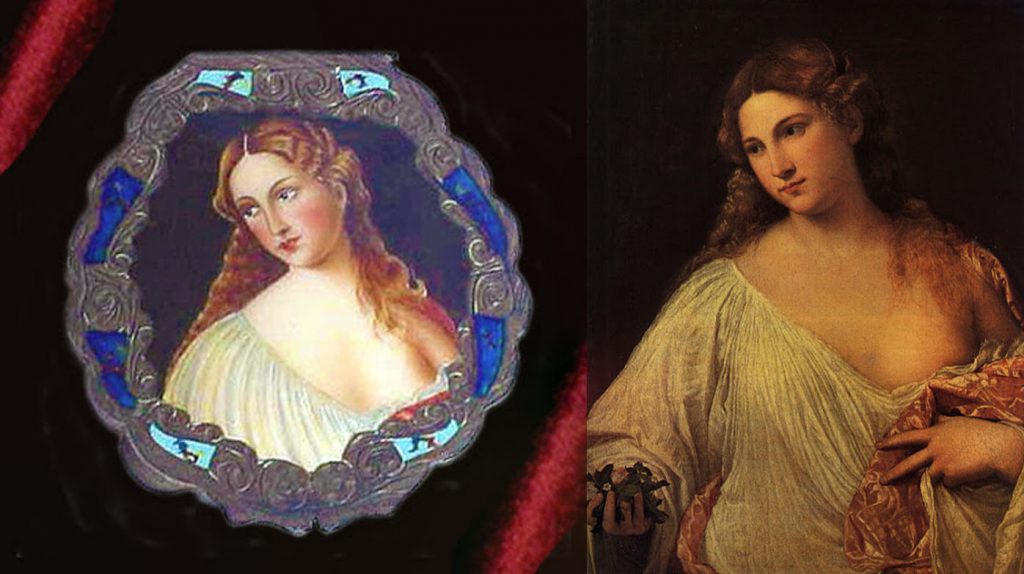
This 1515 work by Titian hangs in The Uffizi Gallery in Florence. No wonder tourists would have been more than ready to take a souvenir copy of this masterpiece in the form of a silver vanity case.
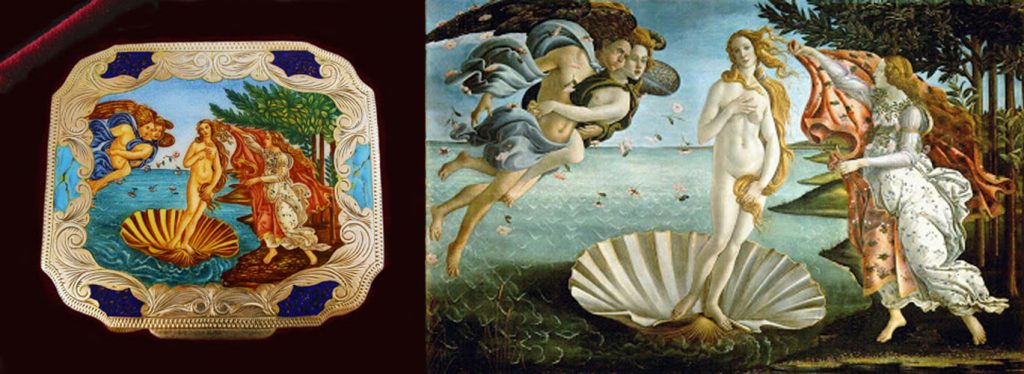
Sandro Botticelli’s iconic painting of The Birth of Venus, from 1486 hangs in the Ufizzi Gallery in Florence.
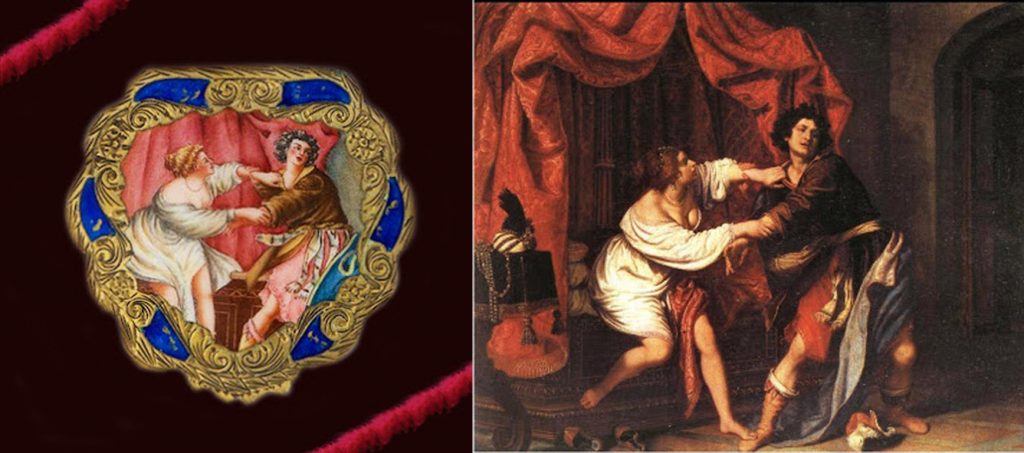
This image is a copy of the original painted in 1618 by Giovanni Biliverti. The whereabouts of the original is a mystery. It’s an unusual subject to appear on a compact.
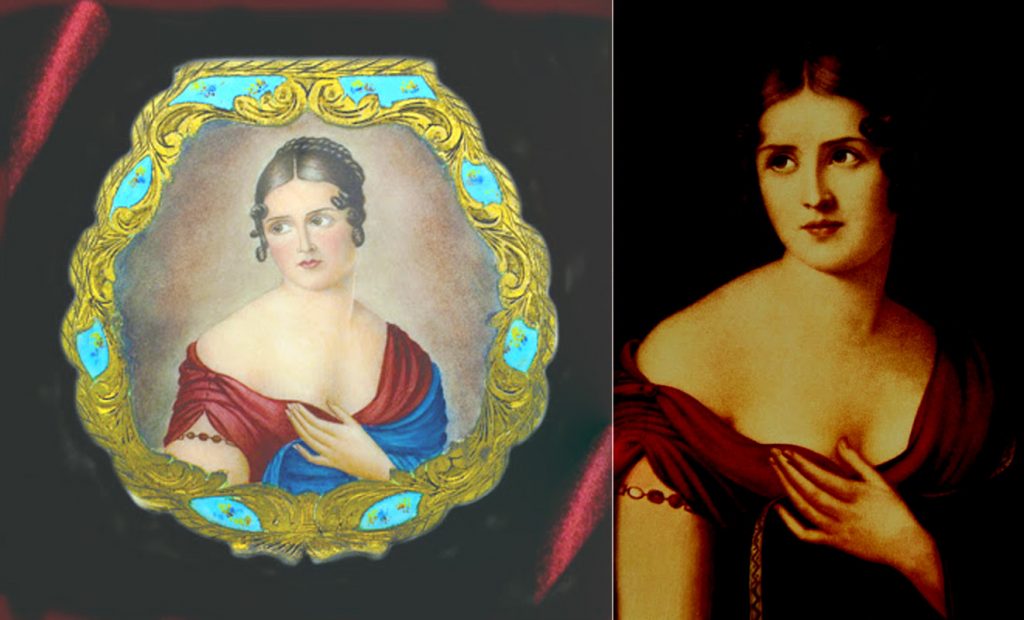
Titled “The Beautiful Greek” by Salomon Counis, the original hangs in The Uffizi Museum in Florence.
A similar looking woman was used on several compacts by the American compact company Mondaine.

This 1857 work by Jean-Francois Millet is titled ‘The Gleaners’. The original hangs in The Musee D’Orsay in Paris.
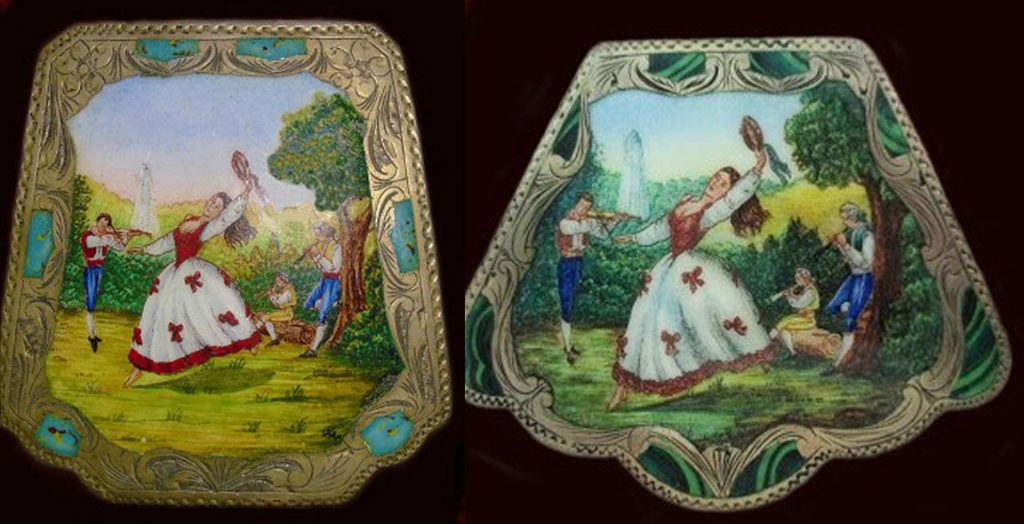
This woman with red ribbons on her dress appears on several scenic compacts by Giuliano Spinelli.
Source: “Italian Beauties” article by Andra Behrendt in PBQ Fall 2018.
Thanks to Michael Hethington for sharing his information. Visit his blog at collectingvintagecompacts.blogspot.com for detailed information on these wonderful Italian compacts.